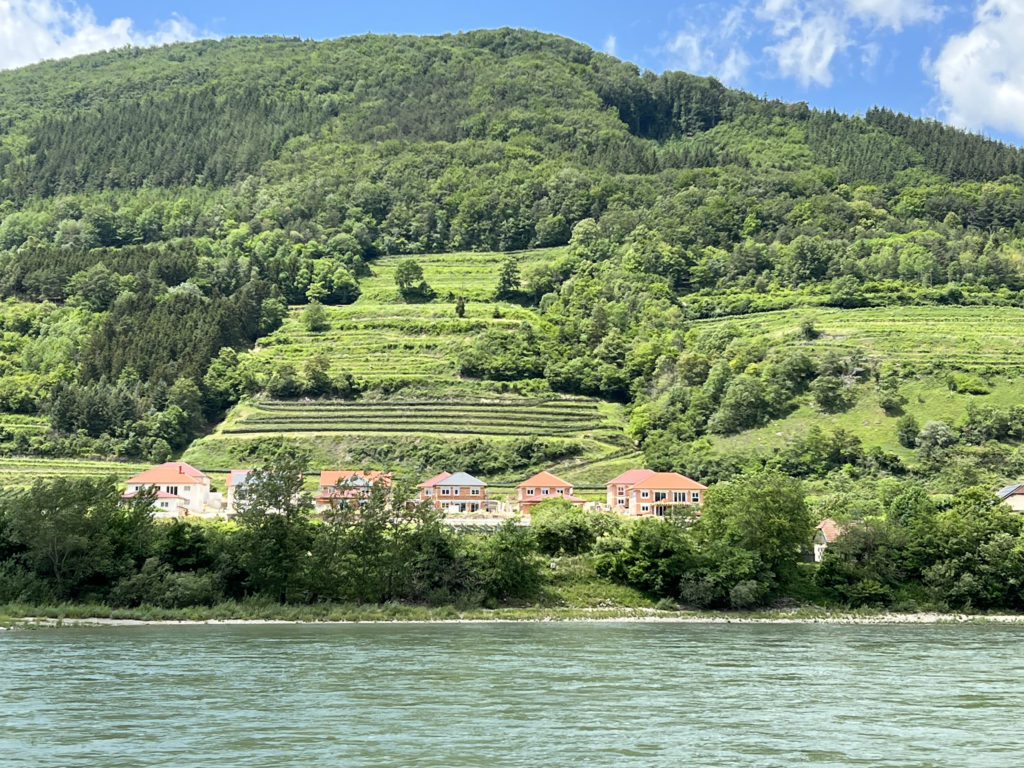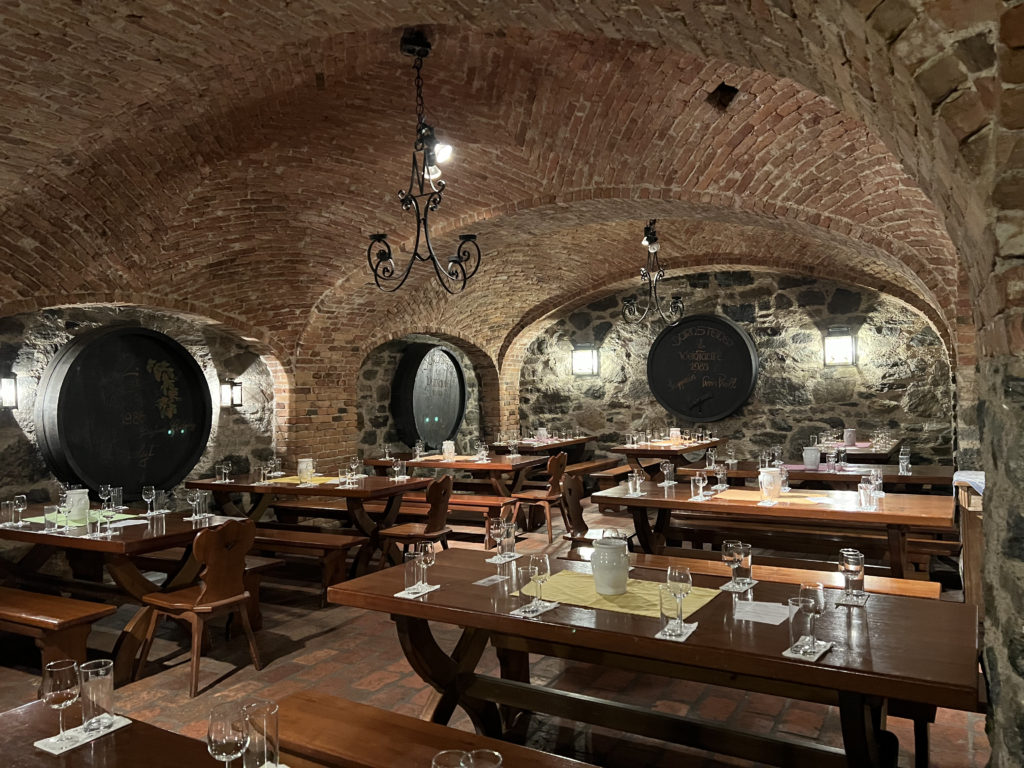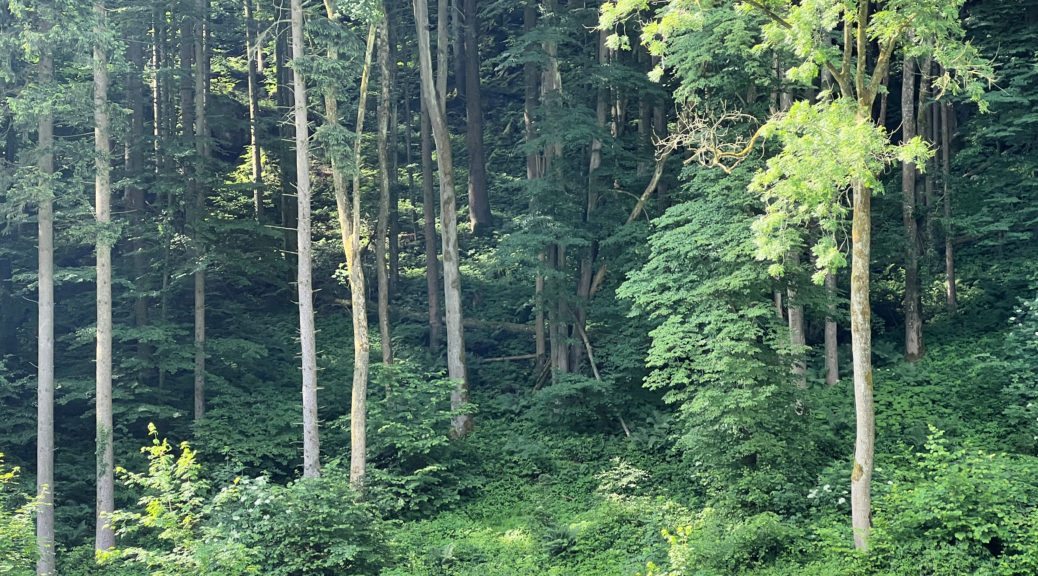
Wachau Valley, Austria
After touring the Cesky Krumlov Palace, we made our way back to Linz and then departed for Dürnstein in the Wachau Valley early the next morning. Brunch was served on the riverboat so we could make our way to the sun deck in the early afternoon to enjoy the beautiful sites. The Wachau Valley is considered one of the most beautiful parts of the Danube and is a UNESCO World Heritage Site, both for its architectural and agricultural history. It stretches about 27 miles from Melk to Krems. The Wachau Valley is known for its abbeys, castles and ruins as well as its vineyards.
These are some of the beautiful landscapes we saw saw we sailed down the Danube – forests, quaint villages, and boulders that are evidence of geological/glacial activity from thousands of years ago. There were also bike paths along much of the shoreline.
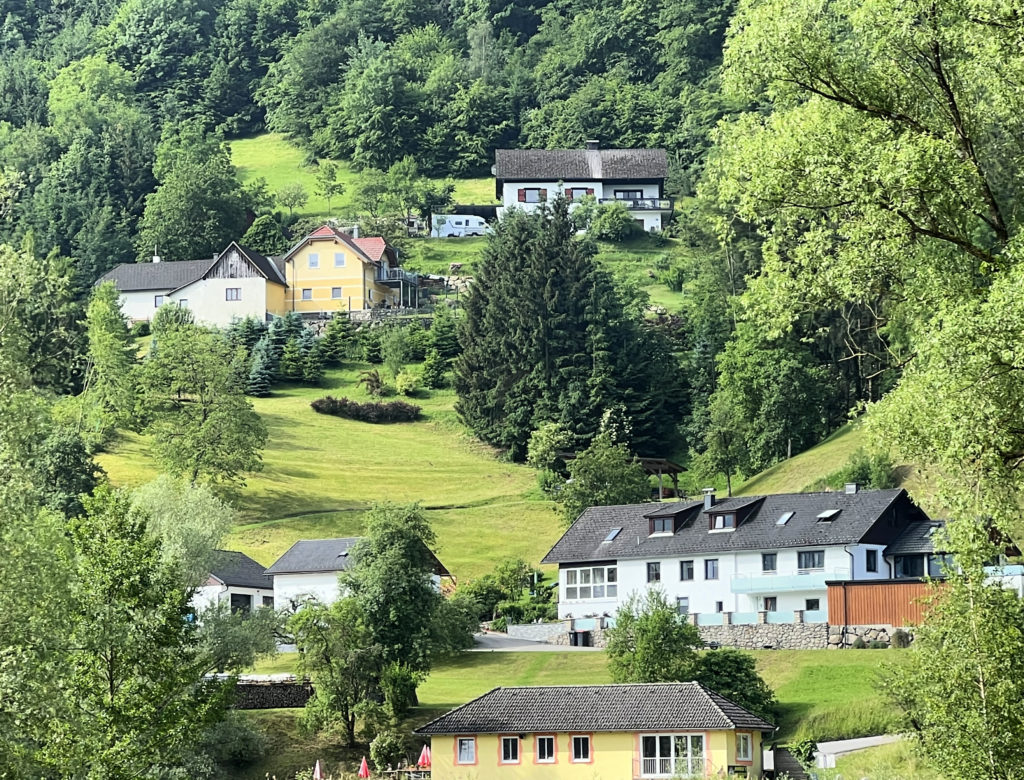
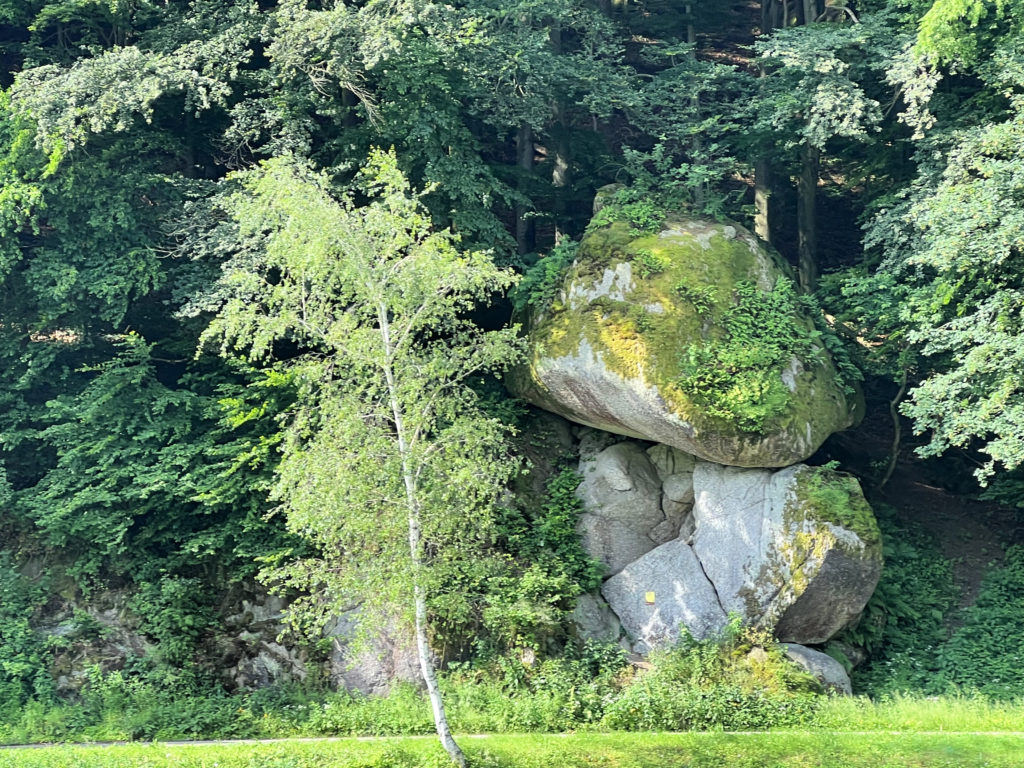

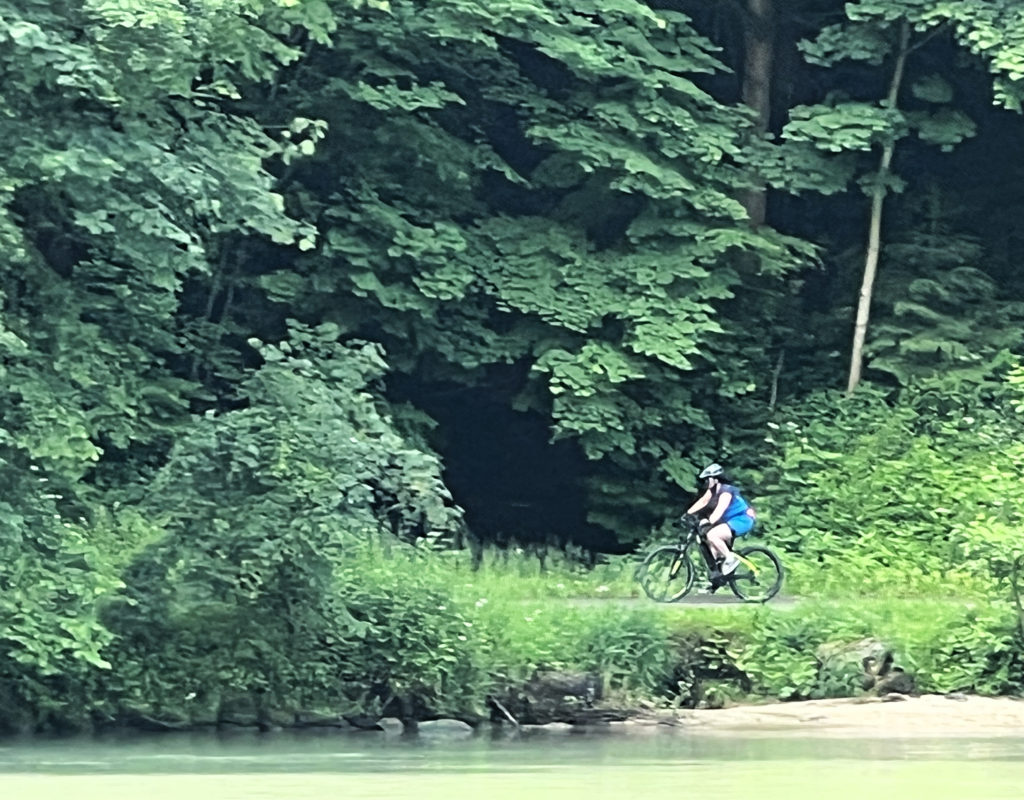
We also saw interesting architecture and historical ruins. The first picture below is of the Melk Abbey. It stands nearly 200 feet above the Danube River. It is a Benedictine abbey and one of the most famous abbeys in Europe. The monks still operate a school here. One of the next buildings we saw was Schloss Schönbühel, a castle in Schönbühel-Aggsbach. It dates back to the 12th Century and rises 130 feet above the Danube. It was originally built as a defensive fortress. It was renovated and partially rebuilt in the early 1800s.
The next picture is of the Aggstein Castle ruins near Aggsbach. It was built in the 12th Century on rock almost 1,000 feet above the Danube. Also pictured is the Ruine Hinterhaus. First documented in 1243, it is located on a rocky ridge. The castle consists of the main castle and two outer baileys (enclosed courtyards). It served an administrative function and to maintain strategic control of the Danube.
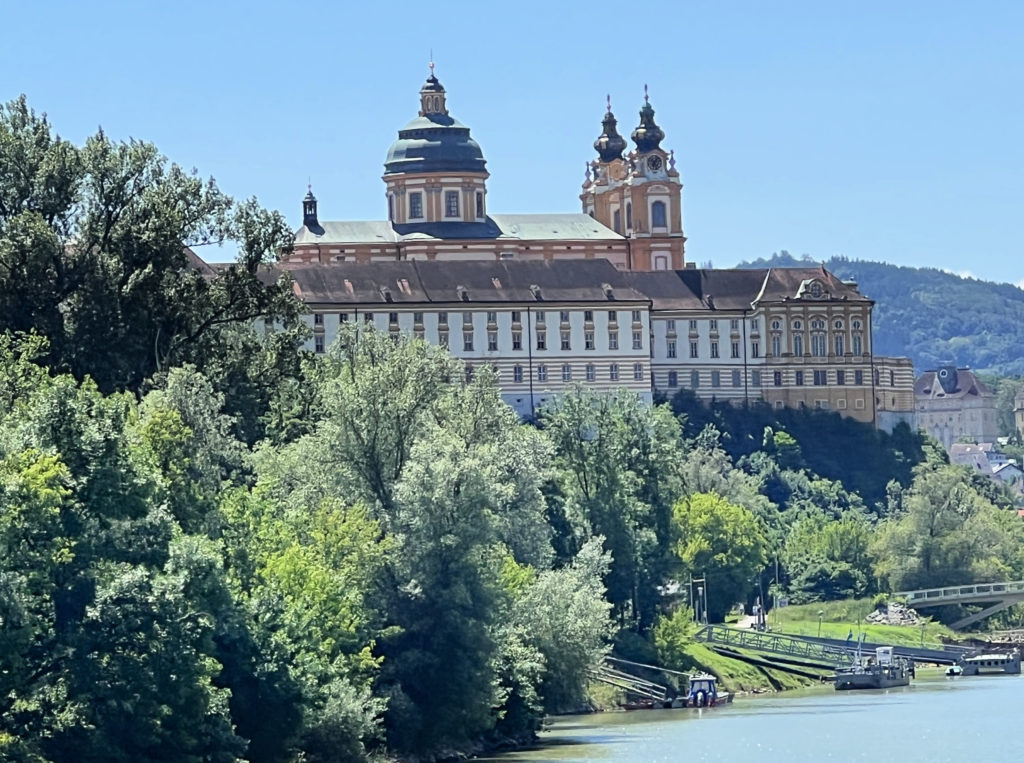
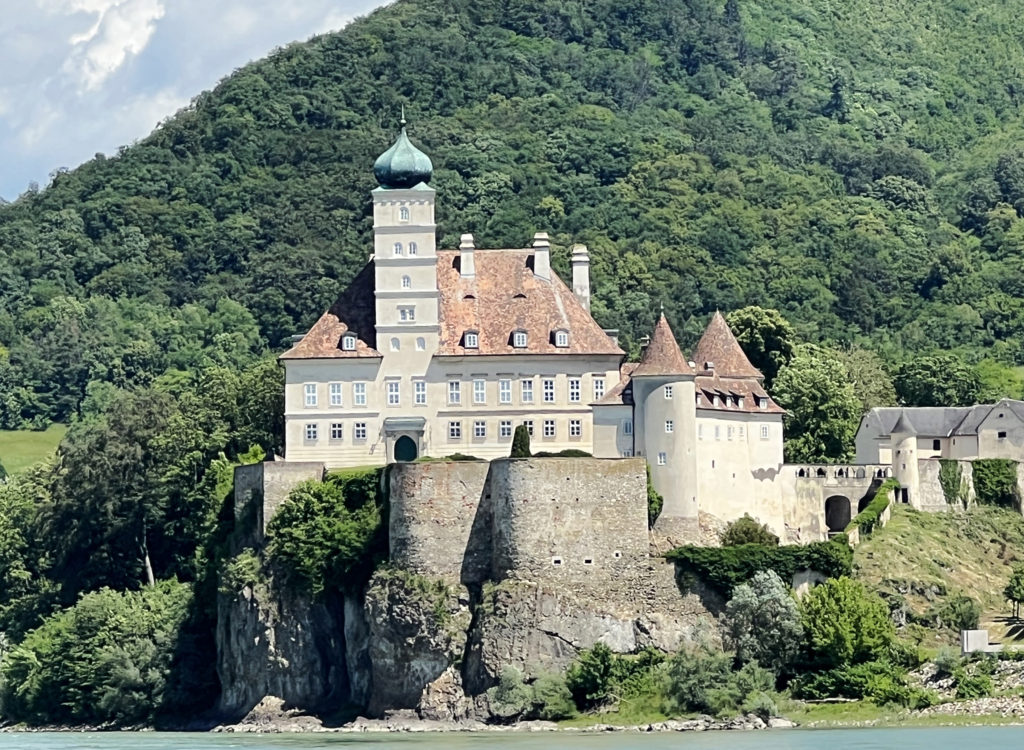
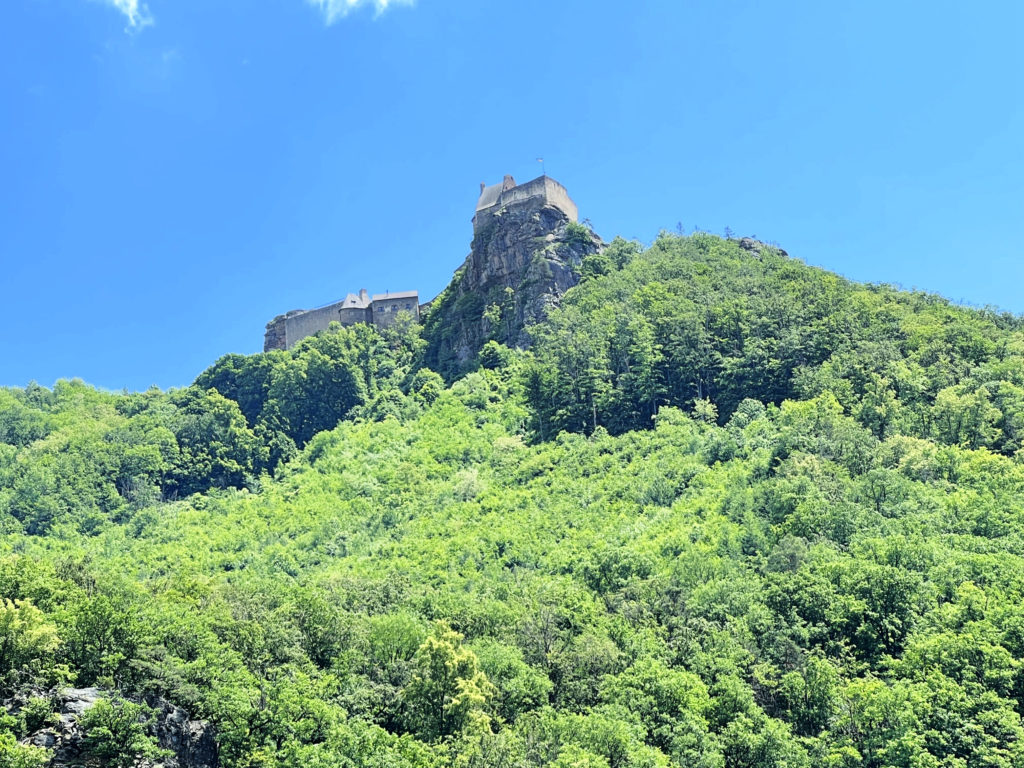
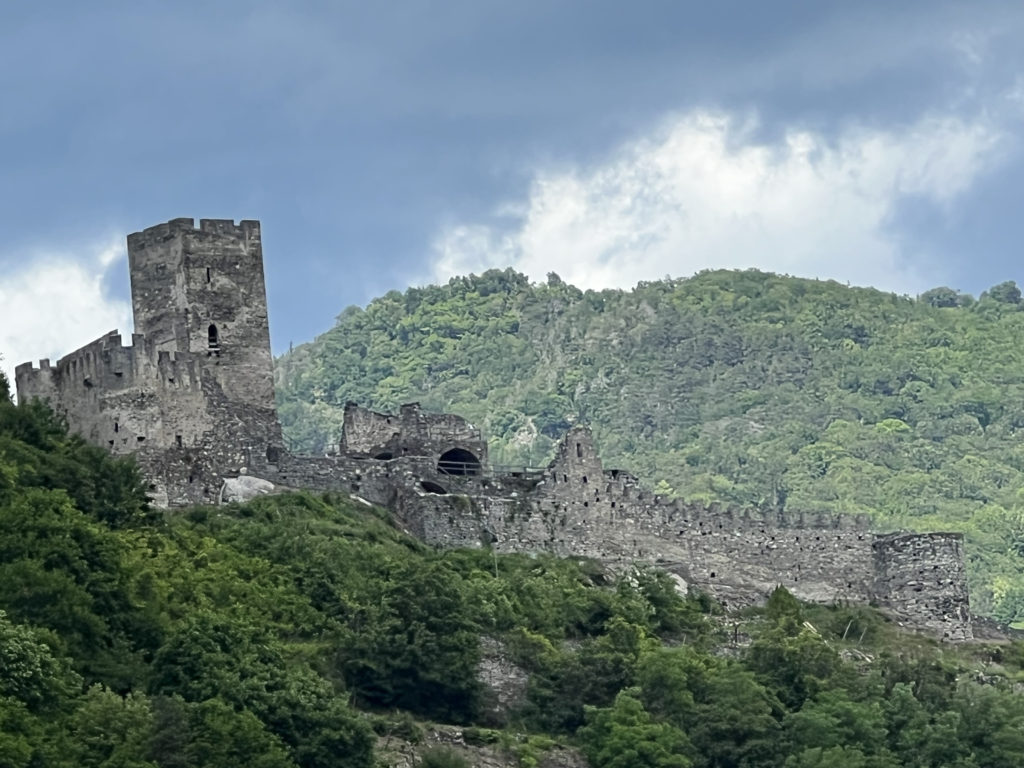
These are two of the churches we saw. The first was near Rossatz-Arnsdorf, but I am not sure of its name. The second picture depicts St. Michael, a Roman Catholic Church located in Weibenkirchen.
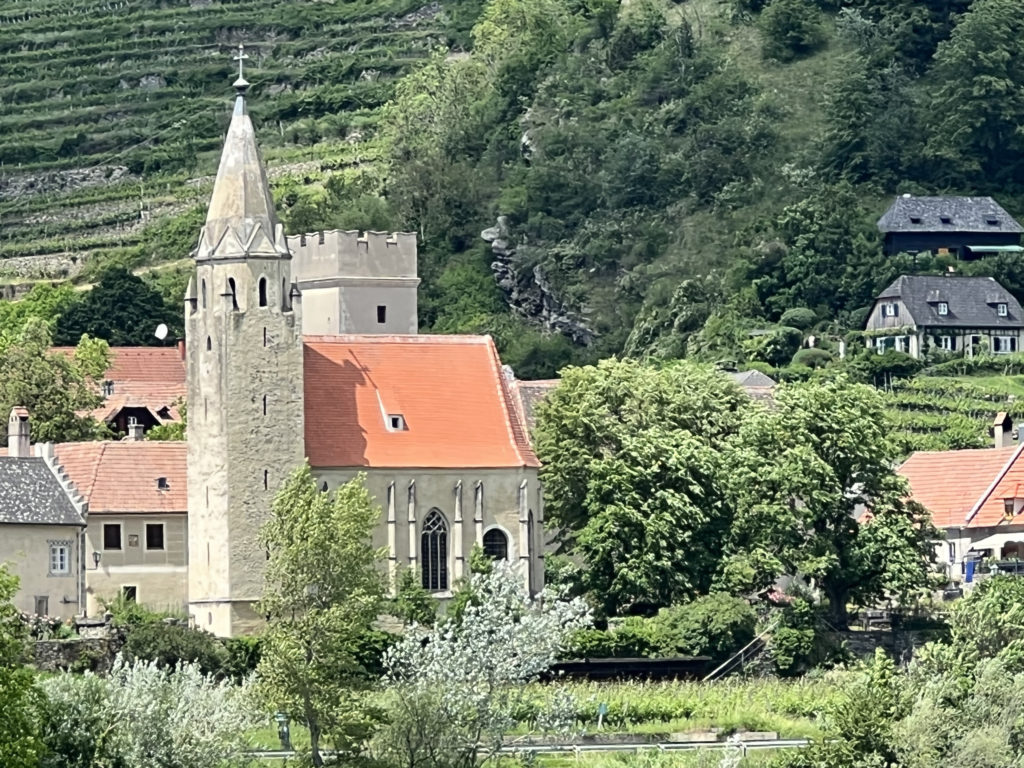
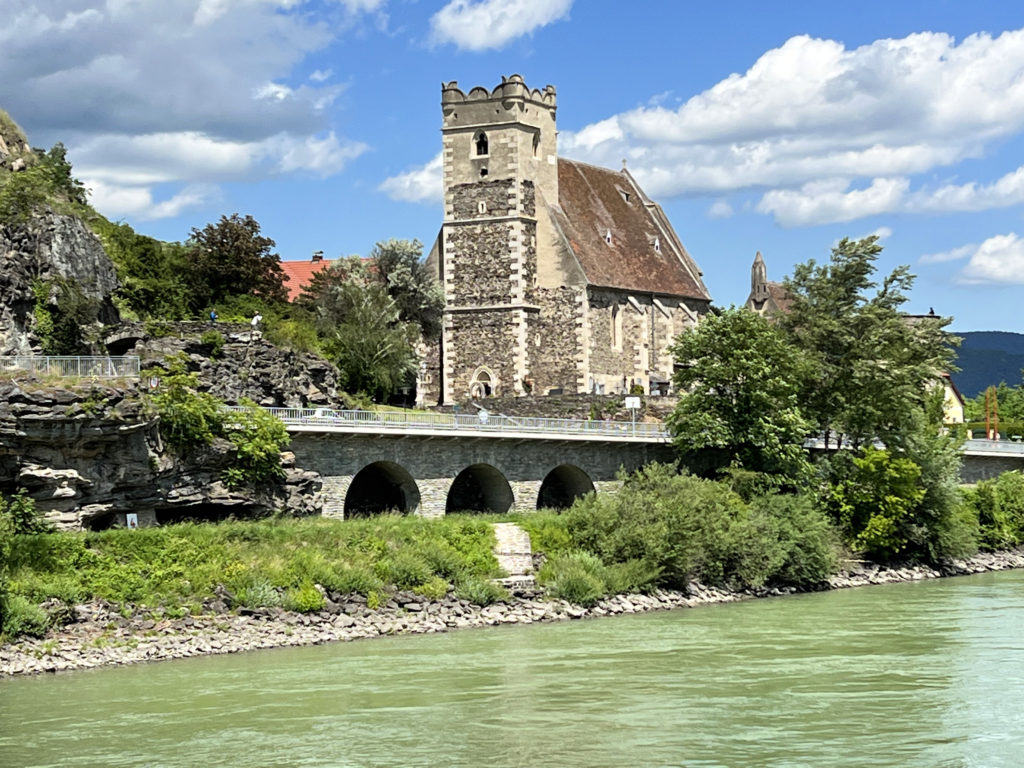
After enjoying the beautiful scenery from our riverboat, we docked in Dürnstein. Dürnstein is a small village of about 900 people, but it attracts one million tourists every year. Like many of the castle ruins we saw while cruising the Danube, Dürnstein also has a long history – at least as far back as 1019. There are records of it as a town in 1347 and it was acquired by the Habsburgs in 1355. It was protected by the sea and a massive fortification wall, part of which is pictured below.
We took a walking tour of Dürnstein. It has narrow, cobbled streets with small shops. We also walked to the tower of the church at Dürnstein Abbey. The church was established in 1372 and the tower constructed in 1733. With its beautiful blue and white colors, it has become a landmark of the Wachau Valley and can be easily seen from the Danube.

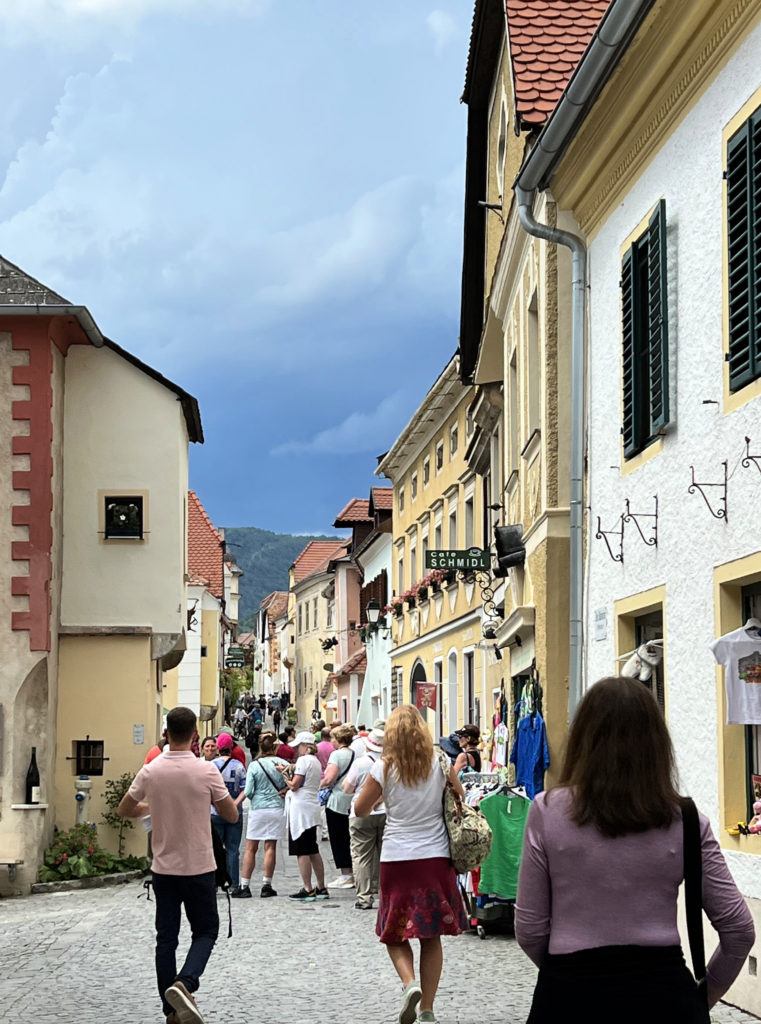

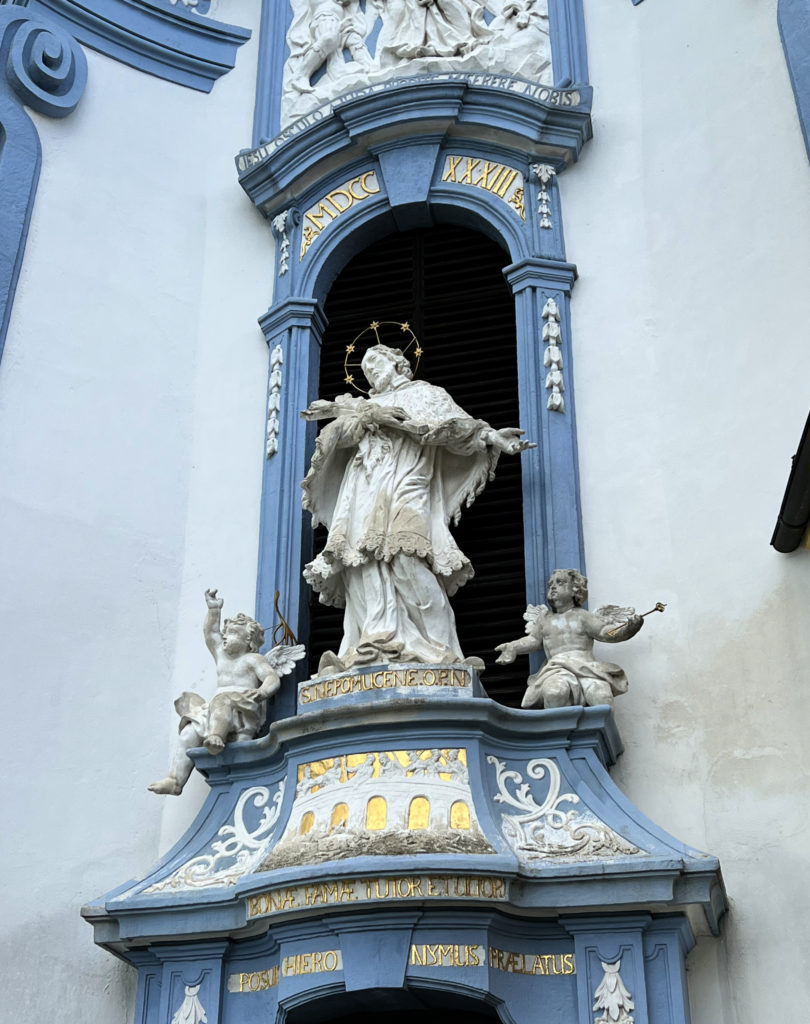
Another option, instead of the walking tour we chose, was to hike to the ruins of Dürnstein Castle. We were warned it was a steep, slippery hike. A few from our group did the hike and they were rewarded with beautiful views. The stone castle was built in the 12th Century and towers above the village. Today it is best known as the place where King Richard the Lionheart was imprisoned after being shipwrecked and taken prisoner by Duke Leopold of Austria, whom Richard had insulted. England was forced to pay a ransom to free him.
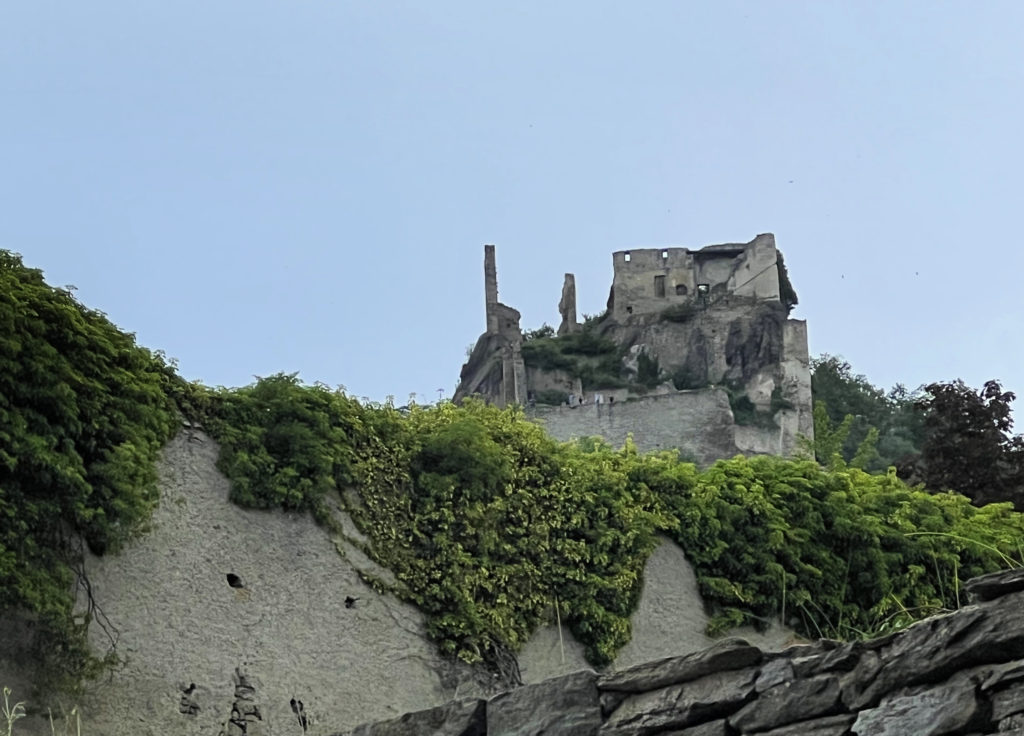

Dürnstein is well-known for its apricots and wines. Apricots, “known as Dürnstein’s Gold,” is distilled into schnapps, liqueurs and brandies. They are also the star ingredient in marmalades, stews, dumplings and cakes. The Wachau Valley is a popular wine destination. The first grapevines were planted by the Celts around the fifth century B.C. Pictured below is one of the terraced vineyards we passed while on the riverboat and the tasting room at Alter Klosterkeller in Dürnstein, a wine cellar where we tried several different wines. The area its best known for Rieslings and Gruner Veltliners.
